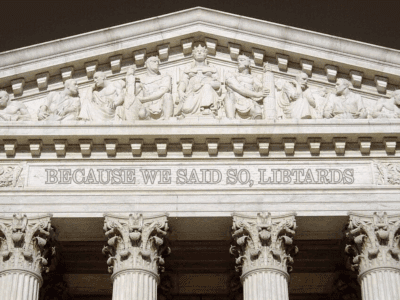Trump’s Seven Most Anti-Environmental Moves — and How to Push Back
There were dozens of actions, all harmful to the environment. These are the worst of the worst.
At this point in Trump’s first term, Ann Carlson wrote a post entitled “Trump’s Environmental Assault Begins.” As expected, he’s gotten off to a much faster start this time. I had originally planned a post collecting all of Trump’s attacks on the environment in his first month. But there are just too many! Here are what I think are the most significant actions so far, and how to push back.
- Regulatory rollbacks. Trump set in motion agency efforts to rollback all Biden-era environmental regulations relating to climate change. This was expected but nonetheless significant. Key targets include regulations substantially limiting carbon emissions from coal-fired powerplants, cars, and trucks. But scores of other regulations are in the cross-hairs, such as energy efficiency standards that benefit consumers and a variety of rules that protect clean air and water. Fortunately, these actions can be challenged in court, and the Trump Administration does not have a good track record in litigation.
- Attacking state policies. Although conservatives used to believe in state’s rights, he also launched attacks on all state policies inconsistent with his own agenda. Referring to what he called the “dangerous” energy policies of Pacific coast and northeast states, he called for agencies to stamp them out. Perhaps the most significant example was a demand to eliminate California’s authority to regulate emissions from cars sold there. Trump is currently trying to get Congress to intervene on that one. Many of these actions help the oil industry but disrupt the industries more directly involved, including public utilities and carmakers. For that reason, it ay be possible to form some interesting coalitions to resist these moves. Also, the conservative Justices have a soft spot for states’ rights.
- Expunging environmental justice. Not content with reversing Biden’s environmental justice programs, Trump reached back three decades to a Clinton-era executive order. He also abolished all environmental justice offices. The U.S. government no lomger cares whether its actions impose disproportionate health burdens on poor or minority communities. Those communities already have higher pollution levels and higher death rates than average, something Trump seems happy to allow. This is an area where state-level action and grassroots politics could help push back.
- Exiting the Paris Agreement. This was another expected action. It gives the U.S. no voice in international climate negotiations and clears space for more Chinese influence. Conservatives complain that other countries have not reduced their climate emissions as much as the U.S. but seem to have no interest in encouraging them to do so. The last time Trump pulled out of Paris, states like California showed up at international meetings to send a message of support for climate action.
- “Pausing” funding for environmental and clean energy projects. In what may well be the most clearly unlawful of its actions, the Administration stopped paying on grants, loans, and contracts because it disagreed with Congress’s decision to fund those programs.l. It seems to be continuing this policy for some spending programs, such as money appropriated for EV charging stations. Congress has forbidden this type of impoundment, so we are clearly heading toward a constitutional clash. Trump is likely to lose this battle in the Supreme Court.
- Tariffs. These are not normally considered “environmental,” but could have a large impact on the clean energy sector. For instance, if Trump’s threatened on Canada and Mexico go into effect, the price increases on steel and aluminum will place significant burdens on construction of new windturbines and transmission lines. Meanwhile, tariffs on Chinese imports are likely to increase costs for new solar installations, utility-scale storage, and electric vehicles. But the tariffs are likely to be inflationary, and there will be pushback from some important industries. Political action is key here.
- Kneecapping Agencies. Trump has launched a frontal assault on the government agencies charged with protecting the environment. The new version of Schedule F and DOGE aim to destroy government regulation by decimating regulators and agency funding. Litigation over these issues has already begun. Public spirited workers who remain in the executive branch are going to have to dig in for a long fight. Weakening federal agencies will make other forms of environmental action in the states and the private sector even dmore important.
Reader Comments
5 Replies to “Trump’s Seven Most Anti-Environmental Moves — and How to Push Back”
Comments are closed.






NEPA NEPA NEPA. And the Energy “Emergency.” They’re determined to use every resource on public lands, NOW.
Dan, your documentation most tragically proves that in 2025 America’s universities/intellectual leaders failed to educate the public to demand that our political leaders protect our Environment and Democracy, even though Berkeley historian Will Durant warned you.
Interesting that current Global Warming destruction of the human race is contributed to by academics because you refuse to communicate with what you refer to as the “Impure” public (as noted by former Chancellor Nicholas Dirks in the Summer 2013 issue of CALIFORNIA).
It appears that our political leaders in Congress, SCOTUS and POTUS have failed to protect our Democracy.
And our universities/intellectual leaders have failed to protect our civilization.
Appreciate this post